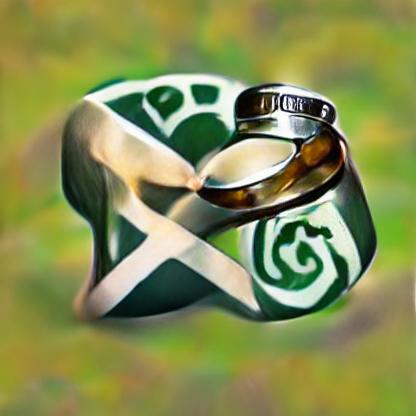
We all know the traditional engagement traditions. The man drops to one knee with a ring and asks for the ladies hand in marriage. With all the gorgeous Celtic engagement rings, we have been asked to create in the Claddagh Design workshop, it's no wonder we got thinking about how to propose like the ancient Celts. Have wedding proposals always been the way things were done today? Are there any ancient wedding and engagement traditions? After doing some digging, we discovered lots of fascinating Celtic traditions. Today, I'm going to look at just two of these ancient engagement rituals used by the Celts, hand fasting and the use of the holed standing stone.
So if you would like to go back to your roots and propose like the ancient Celts, we've got all you need to know to propose the Celtic way!
The ritual of marriage and engagement has remained unchanged for centuries. But the tradition of a couple coming together to proclaim their union has been celebrated in so many different ways throughout history. The great thing about these two customs is that they can be recreated today. So you too, can propose to your love one like the ancient Celts!

The first of these customs was the holed standing stones. These were large standing stones which had a hole carved right through the centre of the stone. This hole was usually positioned at hand height. The custom was that the couple would go to this standing stone, often located on a hill or in a the centre of a field. The couple would then stand at either side of the stone and pass their hands through the hole. When their hands met they would hold hands and proclaim their engagement or sometimes even their marriage. It is thought that this was used both for couples getting married or sometime for couples getting secretly engaged. There are a number of these holed stones still in existence in Ireland. One of the best examples is The Dough Hole Stone in Co. Antrim and it continues to attract couples wishing to partake in this traditional Celtic wedding ceremony. There is also one in our native County Cork! This is the Ballyroon standing stone which is situated in West Cork on the Sheeps Head road. According to Sheeps Head Places late local historian, Jack Sheenan is quoted:
"The hole in the stone is narrow on one side and wide on the other. The man had a bigger hand and he put his hand through the wide side and the woman put her hand through the narrow side. They made their promises when they put their hands through the stone"
The other Celtic engagement tradition is hand fasting. This ancient pagan custom was done when a couple were getting engaged or committing their lives to one another. They would hold hands and a length of cord would be wrapped around their hands and then tied in a knot. This would declare the joining together of the two people and signify the bond that had been made. The act of hand fasting and the intertwining of the cord ties in with the Celtic interlacing and knotwork. Interlacing and Celtic knotwork was used to adorn precious items of important and special significance to the Celts such as Celtic jewelry and manuscripts. The unbroken celtic knotwork pattern was said to symbolize eternity and the cycle of life.

Celtic Wedding Rings
While handfasting is now performed as part of the wedding ceremony, the Celts would have worn these for the duration for the engagement! This is thought to have lasted for a year and a day and could be considered a sort of trial marriage. If after this time the relationship was not working the couple could separate or they could commit to permanent marriage.
Over the past number of years, we have seen an increase in the number of couples choosing alternative Celtic wedding rings from Ogham rings and Celtic Knots to Claddagh designs. Whether it is the symbolic nature of the hands, the intricate never-ending Celtic knot pattern or the sacred and mysterious ancient Ogham language, they all embody elements of these fascinating ancient Celtic traditions creating a unique connections to our Celtic ancestors and their wisdom.

Ogham Inscription by Claddagh Design

